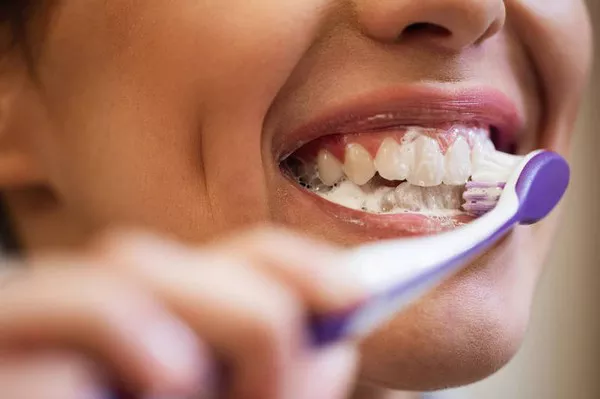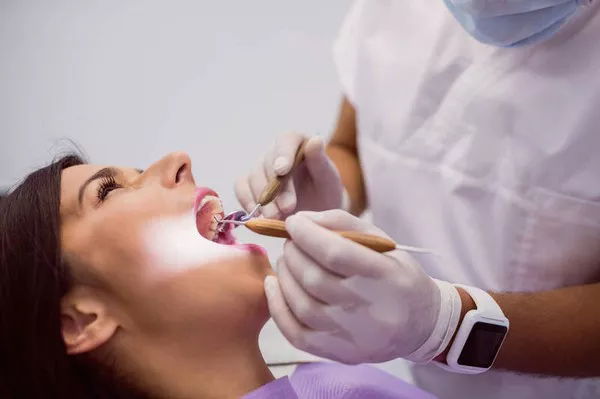Achieving a brighter smile is a common desire, leading many individuals to explore teeth whitening options. One popular method is using whitening strips, which offer convenience and ease of use. However, concerns often arise about the potential impact of whitening strips on tooth enamel, the protective outer layer of teeth. This article delves into the science behind whitening strips, their effects on enamel, and provides insights into maintaining a balance between achieving a whiter smile and preserving the health of your teeth.
Understanding Teeth Enamel
Tooth enamel is the outermost layer of the teeth, composed primarily of hydroxyapatite, a mineralized substance. It serves as a protective barrier, shielding the inner layers of the teeth from external factors, preventing tooth sensitivity, and maintaining the structural integrity of teeth.
How Do Whitening Strips Work?
Whitening strips are thin, flexible plastic strips coated with a peroxide-based gel. Hydrogen peroxide or carbamide peroxide are common active ingredients in the gel. When applied to the teeth, the gel’s bleaching agents break down stain molecules, lightening the teeth’s color and enhancing their appearance.
Effects of Whitening Strips on Enamel
Whitening strips are generally safe when used as directed, and they are designed to minimize adverse effects on enamel. However, there are considerations to keep in mind:
Temporary Sensitivity: Some individuals may experience temporary tooth sensitivity while using whitening strips. This sensitivity typically subsides after the whitening treatment is complete.
Enamel Porosity: Whitening strips can temporarily increase the porosity of enamel. This may cause the teeth to absorb and release minerals more readily, potentially leading to a transient softening of the enamel.
Enamel Remineralization: The temporary softening of enamel due to whitening strips is usually followed by a process called remineralization. Enamel remineralization occurs as minerals from saliva and toothpaste are deposited back onto the enamel surface, restoring its hardness.
Minimizing Enamel Impact
To minimize the potential impact of whitening strips on enamel, consider the following tips:
Follow Instructions: Always follow the manufacturer’s instructions for using whitening strips. Overuse or improper use can lead to adverse effects.
Use Professional Products: Consult your dentist before using any teeth whitening products, and consider professional-grade whitening strips recommended by dental professionals.
Avoid Frequent Use: Limit the frequency of whitening treatments to reduce the risk of enamel sensitivity or changes.
Maintain Oral Hygiene: Brush and floss regularly to ensure optimal oral hygiene and enamel health. A healthy oral environment supports enamel remineralization.
Stay Hydrated: Drinking water helps maintain a balanced oral environment and supports enamel health.
Consult a Dentist: If you have concerns about enamel sensitivity or the effects of whitening strips, consult your dentist for guidance and personalized recommendations.
Balancing Whiter Teeth and Enamel Health
Balancing the desire for whiter teeth with enamel health is crucial. While whitening strips can provide aesthetic benefits, it’s important to prioritize the long-term health of your teeth. Consider the following factors:
Individual Sensitivity: Some individuals may be more prone to enamel sensitivity. If you have a history of tooth sensitivity, discuss your concerns with a dental professional before using whitening strips.
Alternatives: If you’re concerned about enamel impact, explore alternative teeth whitening methods such as professional in-office treatments or dentist-prescribed at-home kits.
Maintenance: After achieving the desired level of whiteness, consider reducing the frequency of whitening treatments and focusing on maintaining the results through good oral hygiene and a healthy diet.
Conclusion
In conclusion, whitening strips can have an impact on tooth enamel, primarily by temporarily increasing enamel porosity and sensitivity. However, when used as directed and in moderation, these effects are generally temporary and reversible. Maintaining proper oral hygiene, staying hydrated, and following professional recommendations can help minimize the impact of whitening strips on enamel health. It’s important to make informed choices that prioritize both the aesthetic benefits of whiter teeth and the long-term health of your enamel. If you have specific concerns or questions, consulting a dental professional is always a prudent step to ensure a balanced approach to teeth whitening.
Related Topics:





























